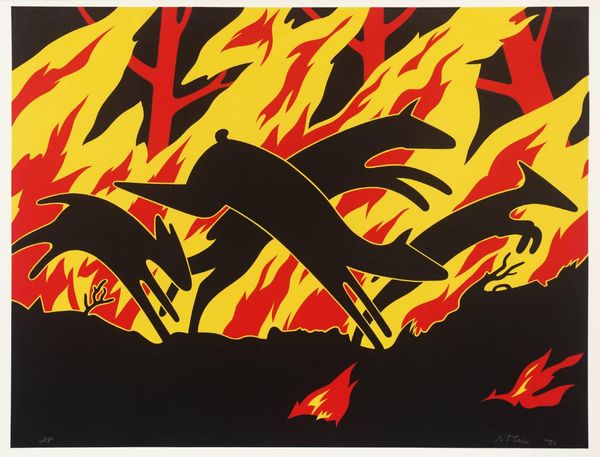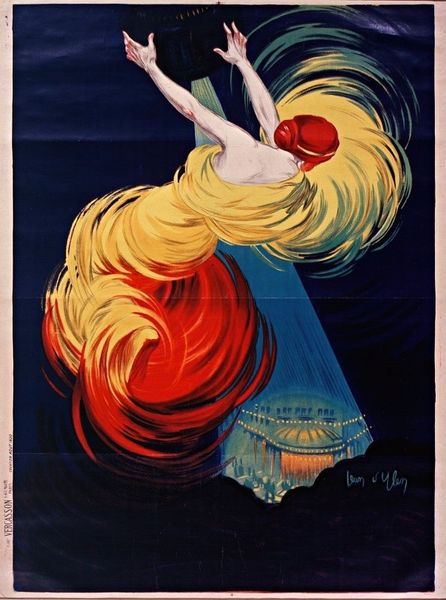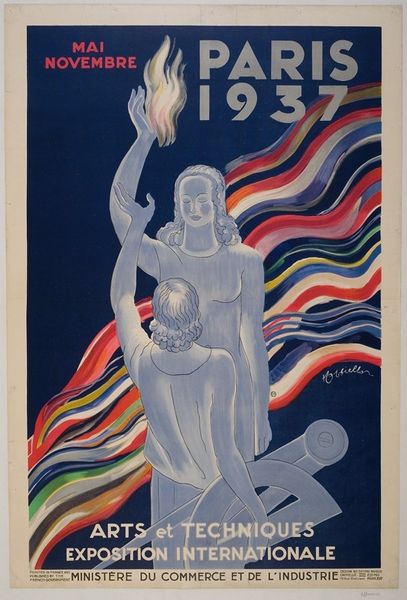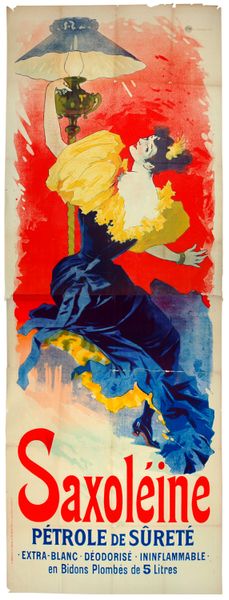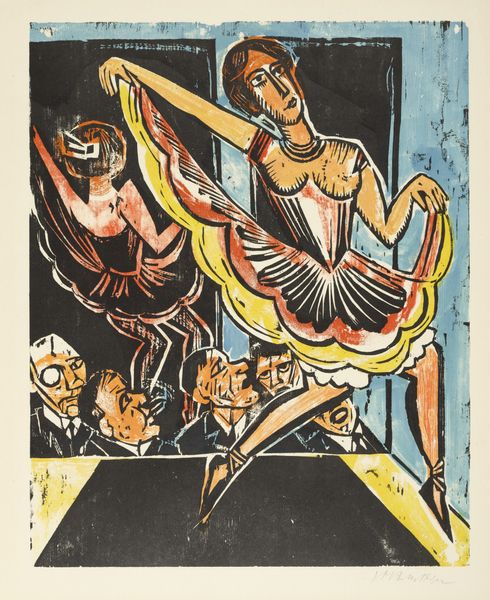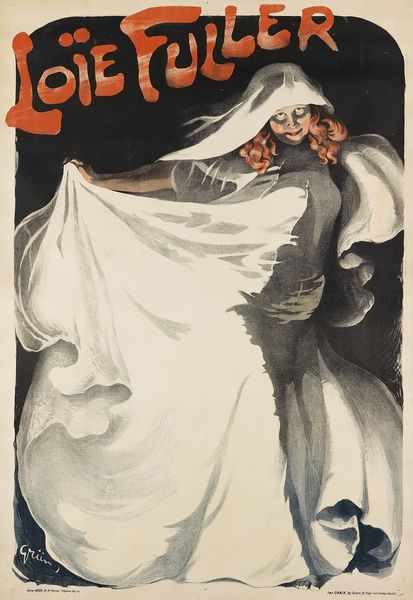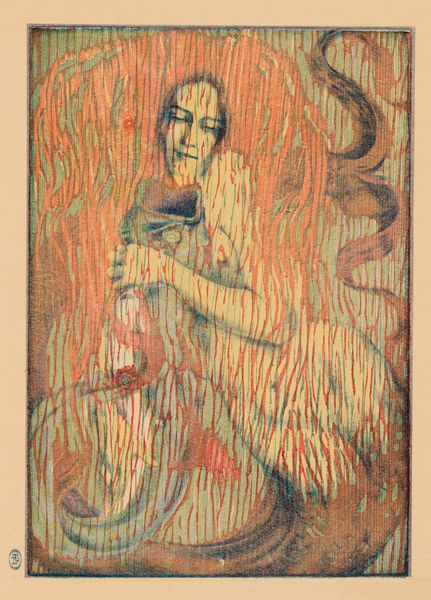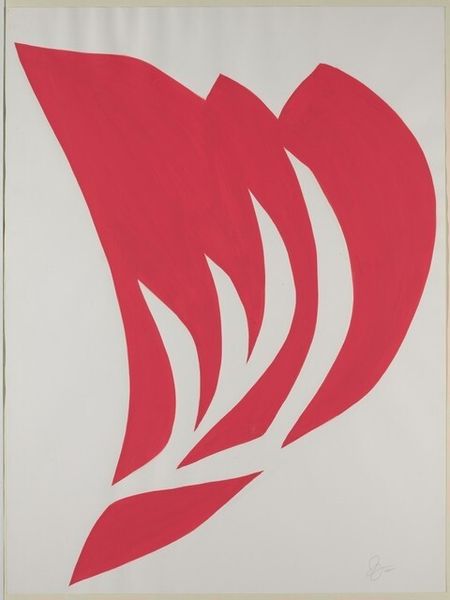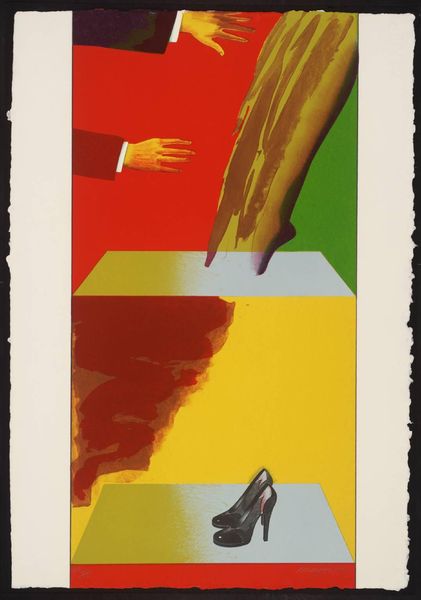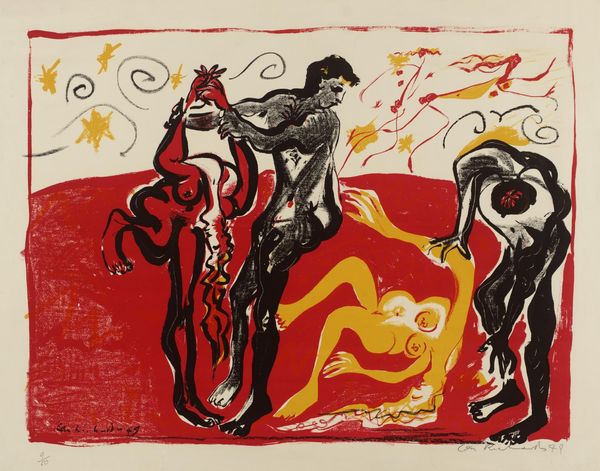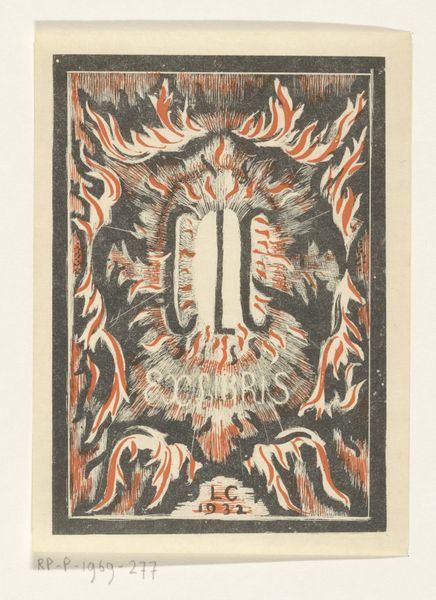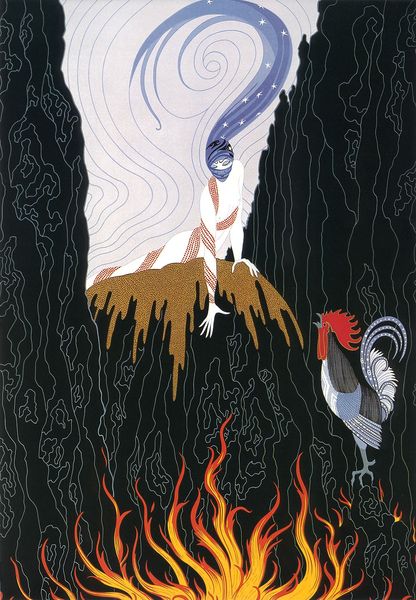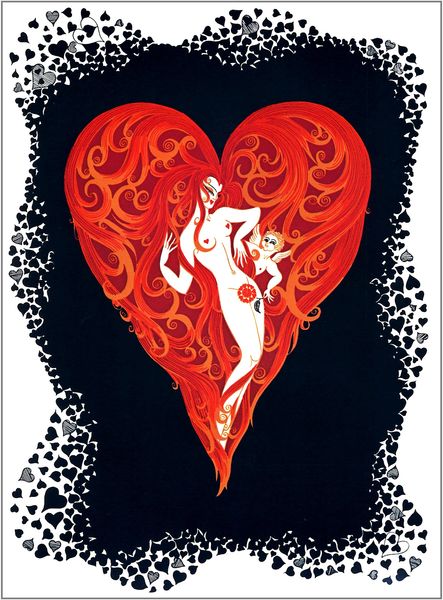
print, poster
#
art-nouveau
# print
#
figuration
#
poster
#
portrait art
Dimensions: 46 3/4 x 33 9/16 in. (118.75 x 85.25 cm) (image)51 1/2 x 37 1/4 in. (130.81 x 94.62 cm) (sheet)
Copyright: Public Domain
Editor: This is "Loie Fuller," a color lithograph from around 1894 by Jean de Paléologue, currently housed at the Minneapolis Institute of Art. The dancer seems to emerge from flames. It’s really striking, and almost feels like it’s capturing movement, but how do we interpret it from a historical perspective? Curator: Pal's "Loie Fuller" vividly demonstrates how posters in fin-de-siècle Paris engaged with a growing public fascination with spectacle and performance. Consider Fuller herself: not just a dancer, but a multimedia innovator whose act centered on light, flowing fabrics, and proto-cinematic projections. The poster is an advertisement, but also commentary. Editor: Commentary? How so? Curator: These weren't just advertisements for shows. Think about the social context – the rise of mass media, burgeoning consumer culture, anxieties surrounding the changing roles of women… a poster like this, splashed across the city, contributed to those debates. The image of Fuller—enigmatic, partially obscured—invited curiosity, fed the public’s hunger for novelty. Note the art nouveau style—a departure from fine art ideals embraced the poster as a viable form for popular messaging. What do you see in its overall composition? Editor: I guess it shows the growing importance of commercial art in influencing and shaping culture, as well as this desire to capture the zeitgeist. This lithograph shows art and performance reflecting larger social currents, doesn’t it? Curator: Precisely. And it asks us to question the supposed divide between high art and mass culture. Fuller blurred the boundaries; this print blurs them further. Editor: I never considered how posters could be these active participants in cultural discussions. Thanks, this opened up a whole new perspective. Curator: Indeed! And it encourages us to look deeper into seemingly simple images, and consider the historical forces shaping how we see.
Comments
No comments
Be the first to comment and join the conversation on the ultimate creative platform.
